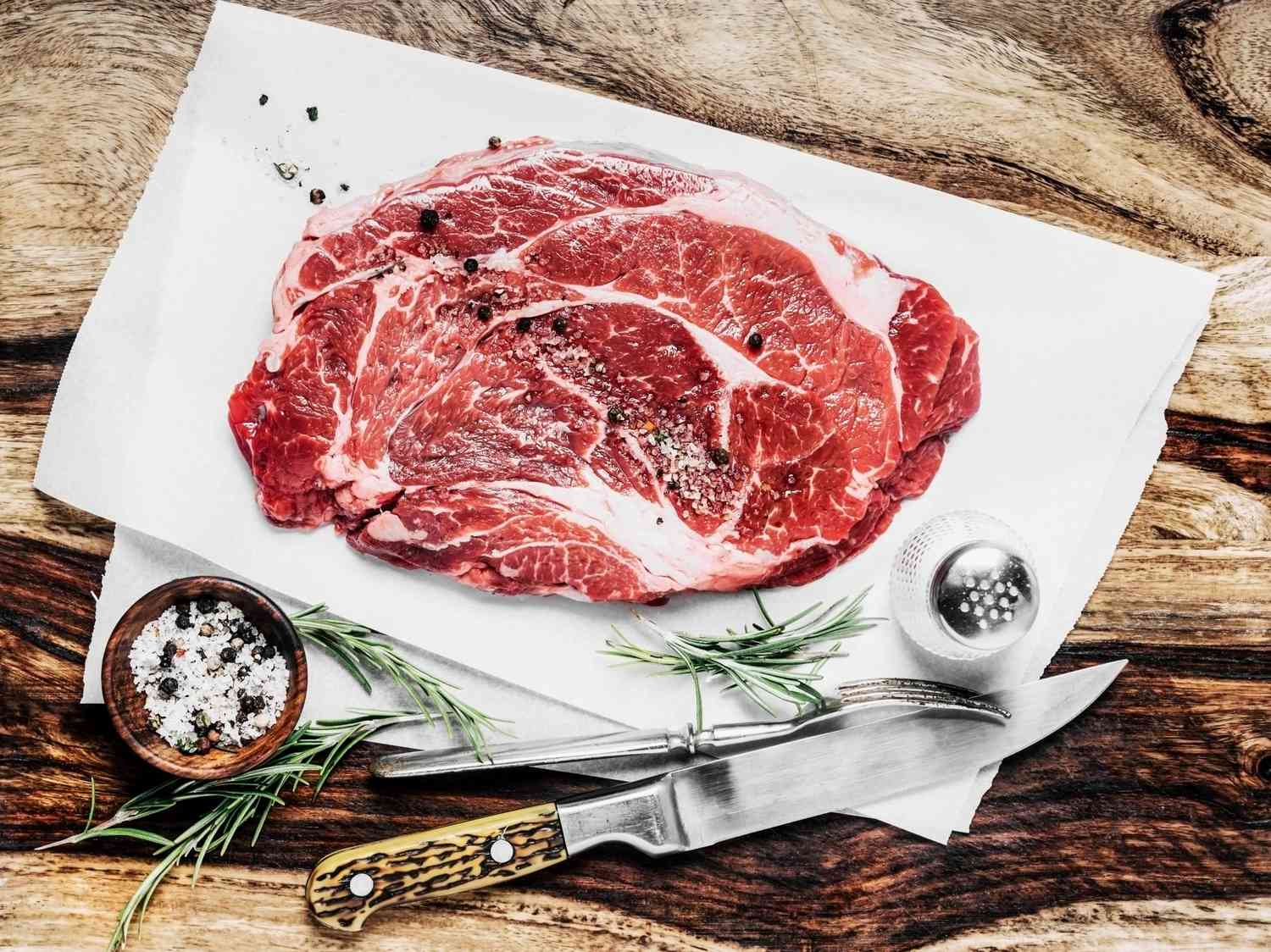

Articles
How To Store Meat Without Refrigeration
Modified: January 6, 2024
Learn the art of storing meat without refrigeration in this comprehensive collection of articles. Discover effective techniques for preserving meat in any situation.
(Many of the links in this article redirect to a specific reviewed product. Your purchase of these products through affiliate links helps to generate commission for Storables.com, at no extra cost. Learn more)
Introduction
When it comes to storing meat, refrigeration has become the go-to method in our modern world. However, there may be situations where refrigeration is not available or simply not feasible. Whether you are camping, living off-grid, or facing a power outage, it is important to know alternative methods for storing meat without refrigeration. Understanding these methods will not only ensure the safety and freshness of the meat but also allow you to enjoy delicious meals even in challenging circumstances.
In this article, we will explore various techniques that can be used to store meat without refrigeration. From traditional preservation methods to modern innovations, we’ll cover everything you need to know to keep your meat fresh and safe for extended periods of time.
Before we delve into the methods, it’s important to understand the basics of meat storage. Proper meat storage requires creating an environment that inhibits the growth of bacteria, slows down decomposition, and preserves the flavors and textures of the meat. The goal is to prevent spoilage and contamination, ensuring the meat remains safe to consume.
Key Takeaways:
- Embracing traditional and modern preservation methods, you can store meat without refrigeration using techniques like dry-salting, curing, smoking, canning, vacuum sealing, and natural preservation. These methods ensure safe and delicious meat even in challenging circumstances.
- Leveraging natural elements and resources, methods like root cellars, meat storage pits, and outdoor freezing offer practical and effective alternatives for long-term meat preservation. Proper temperature control, insulation, and monitoring are essential for successful meat storage without refrigeration.
Read more: How To Store Fish In Refrigerator
Understanding the Basics of Meat Storage
Proper meat storage involves controlling temperature, moisture, and exposure to air. These factors play a crucial role in preventing bacterial growth, enzymatic activity, and oxidation, which can lead to spoilage and loss of quality.
One fundamental principle of meat storage is to keep the temperature as low as possible. Lower temperatures slow down the growth of bacteria and parasites, extending the shelf life of the meat. Ideally, meat should be stored between 32°F (0°C) and 40°F (4°C). If refrigeration is not available, consider alternative methods such as cold cellars or basements, where temperatures are naturally cooler.
Another important aspect is to maintain the appropriate level of moisture. Excess moisture can create a breeding ground for bacteria, while insufficient moisture can cause the meat to dry out. It is crucial to strike the right balance. If you are using a preservation method like drying or smoking, make sure the meat is properly hydrated before proceeding.
Air exposure is yet another factor to consider. Oxygen can contribute to the oxidation process, leading to changes in color, flavor, and texture. Vacuum-sealing, using airtight containers, or covering the meat with natural fat or oil can help reduce air exposure and prolong the meat’s freshness.
Furthermore, it is important to handle the meat with care to prevent cross-contamination. Always use clean utensils, cutting boards, and containers when handling raw and cooked meat. Additionally, practicing proper food hygiene and sanitation can significantly reduce the risk of bacterial contamination.
By understanding these basic principles of meat storage, you are better equipped to select the right preservation method for your needs. Now, let’s explore some of the most effective methods for storing meat without refrigeration.
Choosing the Right Cuts of Meat
When it comes to storing meat without refrigeration, it is important to select the right cuts of meat that can withstand longer storage periods. Certain cuts are more suitable for this purpose due to their lower fat content, higher collagen content, and higher resistance to spoilage.
Lean cuts of meat, such as sirloin, loin, and round, are generally more suitable for long-term storage. These cuts have less fat, which means they are less prone to rancidity and spoilage. On the other hand, fatty cuts, like ribeye or pork belly, are better consumed fresh or preserved using other methods, such as smoking or curing.
Moreover, cuts with higher collagen content, such as shanks or shoulders, tend to hold up better during storage. Collagen is a protein that breaks down into gelatin when cooked slowly for an extended period. This gelatin creates a protective barrier around the meat, preventing the growth of bacteria and maintaining its quality.
When choosing cuts for storage, it is essential to prioritize freshness. Look for meat that has been properly handled and stored before purchase. The color and smell of the meat can also indicate its freshness. Fresh meat generally has a bright red color and a slightly metallic smell. Avoid purchasing meat that appears discolored or has a strong, unpleasant odor.
Additionally, consider the type of meat you are storing. Different meats require different storage methods and considerations. For example, beef and venison can be dry-aged, while poultry and fish have more delicate textures and require different preservation techniques.
By selecting the right cuts of meat, you can ensure that your stored meat maintains its quality and remains safe for consumption over an extended period of time. In the next section, we will explore various methods for preparing the meat before storage.
Preparing the Meat for Storage
Before storing meat without refrigeration, proper preparation is vital to ensure its longevity and quality. The preparation process involves removing any excess moisture, seasoning, and applying preservation techniques that will inhibit bacterial growth and maintain flavor.
The first step in preparing the meat is to remove any excess moisture. This can be achieved through a process called “dry-salting.” Dry-salting involves generously coating the meat with salt and allowing it to sit for a certain period. The salt draws out moisture from the meat, creating an inhospitable environment for bacteria. After dry-salting, rinse the meat to remove excess salt, pat it dry, and proceed with the desired preservation method.
Seasoning the meat is an optional step but can enhance the flavor during storage. Add herbs, spices, and other seasonings of your choice to infuse the meat with additional flavors. This step is particularly important for methods like curing, smoking, and canning, where the meat will be exposed to the flavors for an extended period.
Depending on the chosen preservation method, there are various techniques to apply. Curing involves using a mixture of salt, sugar, and other spices to preserve the meat. The meat is typically coated in the curing mixture and refrigerated for several days to allow the flavors to penetrate and the meat to cure. Smoking, on the other hand, involves exposing the meat to smoke from burning wood chips, which both flavors and preserves the meat.
Another popular preservation method is canning, where the meat is cooked and packed into jars along with liquid and seasonings. The jars are then heated to a specific temperature to kill bacteria and create a vacuum seal, allowing the meat to be safely stored at room temperature for an extended period.
Vacuum-sealing is also a useful technique for preparing meat for storage. A vacuum sealer removes the air from the packaging, minimizing oxidation and inhibiting bacterial growth. This method is particularly effective for short to medium-term storage.
By taking the time to properly prepare the meat, you ensure that it is ready for the chosen preservation method and that its quality and flavor are maintained throughout the storage period. In the following sections, we will explore various preservation techniques that can be used to store meat without refrigeration.
Utilizing Dry-Salt Preservation Method
The dry-salt preservation method has been used for centuries to preserve meat without refrigeration. It involves coating the meat with a generous amount of salt, which draws out moisture and creates an inhospitable environment for bacteria to thrive.
To utilize the dry-salt preservation method, start by selecting a high-quality, lean cut of meat. Remove any excess moisture by patting the meat dry with paper towels. Then, generously coat the meat on all sides with coarse salt, such as kosher or sea salt. Make sure to cover all areas of the meat, including any crevices or cavities.
Once the meat is thoroughly coated in salt, place it on a wire rack or a tray and allow it to sit in a cool, dry environment for a specific period. The duration of the salting process depends on the size and thickness of the meat. A general rule of thumb is to allow one day of salting time for every inch (2.5 cm) of thickness. You may need to adjust the time slightly depending on external factors such as temperature and humidity.
During the salting process, the salt will draw out moisture from the meat, effectively dehydrating it. This dehydration inhibits the growth of bacteria and helps to preserve the meat. The salt also imparts flavor to the meat, enhancing its taste and richness.
After the desired salting time has elapsed, rinse the meat thoroughly under cold water to remove the excess salt. Pat it dry with paper towels and then proceed with your preferred storage method. You can choose to further season or marinate the meat before storing it to add additional flavors.
It is important to note that while the dry-salt preservation method is effective for short to medium-term storage, it is not suitable for long-term preservation. The meat should be consumed within a few weeks and kept in a cool, dry place away from direct sunlight.
When using the dry-salt preservation method, it is crucial to ensure that the meat remains properly sealed and protected from contaminants. Wrap the meat tightly in cheesecloth or butcher paper, securing it with twine or rubber bands. This will help prevent any exposure to air and maintain the quality of the meat.
By utilizing the dry-salt preservation method, you can successfully store meat without refrigeration and enjoy its delicious flavors even in situations where refrigeration is not available. In the next section, we will explore another popular preservation technique: curing.
Read more: How To Store Eggs Without Refrigeration
Employing Curing Techniques
Curing is a traditional preservation technique that involves using a mixture of salt, sugar, and other spices to preserve meat. The combination of these ingredients not only helps to extend the shelf life of the meat but also imparts unique flavors and enhances its overall taste.
The process of curing begins by creating a curing mixture. This mixture typically consists of salt, sugar, and other flavoring agents like herbs, spices, and even curing salts, which contain sodium nitrate or sodium nitrite. The curing salts help prevent the growth of bacteria, including the dangerous bacteria that cause botulism.
To cure the meat, start by selecting a fresh, lean cut that is suitable for curing, such as pork belly for bacon or beef for corned beef. Remove any excess moisture from the meat by patting it dry with paper towels.
Next, generously coat the meat on all sides with the curing mixture, ensuring that it is evenly distributed. If desired, you can apply additional spices or seasonings to enhance the flavor. Once the meat is coated, place it in a container or a large plastic bag and refrigerate it.
During the curing process, the salt in the mixture draws out moisture from the meat, effectively dehydrating it. The sugar and spices, on the other hand, infuse the meat with flavor. It is recommended to leave the meat in the refrigerator for several days or even weeks, depending on the desired level of curing and the thickness of the cut.
After the curing period, rinse the meat under cold water to remove any excess salt and spices. Then, pat it dry with paper towels and let it air-dry for a short period to develop a pellicle, a thin layer on the surface of the meat that helps preserve its texture and flavor.
Once the meat is cured, it can be stored in a cool, dry place, such as a pantry or a root cellar, away from direct sunlight. It is important to note that cured meat should be consumed within a reasonable timeframe and stored properly to maintain its quality.
Cured meat can be enjoyed in various ways, such as thinly sliced for sandwiches, cooked and incorporated into recipes, or even eaten as is. The curing process adds a unique, savory flavor to the meat, making it a popular choice for charcuterie boards and gourmet dishes.
By employing curing techniques, you can safely preserve meat without refrigeration while adding delicious flavors to elevate your culinary creations. In the next section, we will explore the art of smoking as another method for preserving and enhancing the flavor of meat.
Exploring Smoking as a Preservation Method
Smoking is not only a popular cooking technique but also an effective method for preserving meat without refrigeration. The combination of low heat, smoke, and extended cooking time helps to preserve the meat by removing moisture and inhibiting the growth of bacteria.
To explore smoking as a preservation method, start by selecting the appropriate type of wood for smoking. Different types of wood, such as hickory, mesquite, or applewood, impart distinct flavors to the meat. Soak the wood chips or chunks in water for at least 30 minutes before placing them in the smoker.
Next, prepare the meat by applying a dry rub or marinade. The rub or marinade helps to enhance the flavor of the meat and creates a delicious crust during the smoking process. Allow the meat to marinate for a few hours or overnight in the refrigerator to let the flavors develop.
Once the meat is marinated, it’s time to set up your smoker. The ideal temperature for smoking meat is usually between 200°F (93°C) and 275°F (135°C). Place the soaked wood chips or chunks in the smoker, and then arrange the meat on the cooking grates.
Close the smoker and let the meat smoke for several hours, ensuring that it reaches the appropriate internal temperature for safety. The smoking duration varies depending on the type and size of the meat, but it generally ranges from 2 to 8 hours. As the meat smokes, the low heat and smoke create a barrier against bacteria and help to dehydrate the meat, extending its shelf life.
After the smoking process is complete, remove the meat from the smoker and let it rest for a few minutes before serving or further storage. The smoked meat can be consumed immediately, or it can be wrapped tightly in butcher paper or aluminum foil and stored in a cool, dry place for several days or refrigerated for longer periods.
Smoked meat can be enjoyed by itself or incorporated into various recipes, such as sandwiches, soups, stews, or salads. The smoking process infuses the meat with a distinct, smoky flavor that adds depth and complexity to your dishes.
When utilizing smoking as a preservation method, it is crucial to ensure that the meat is fully cooked to the recommended internal temperature to eliminate any potential health risks. Additionally, proper storage and handling practices should be followed to maintain the quality and safety of the smoked meat.
By exploring smoking as a preservation method, you can not only extend the shelf life of meat without refrigeration but also impart a tantalizing smoky flavor that will delight your taste buds. In the next section, we will delve into the technique of canning as another option for meat preservation.
To store meat without refrigeration, consider curing or smoking it to preserve it for longer periods. Curing involves using salt and sugar to draw out moisture, while smoking adds flavor and acts as a preservative.
Considering Canning as an Option
Canning is a reliable and long-established method for preserving meat without refrigeration. It involves cooking the meat, packing it into jars, and sealing them to create an airtight environment. This process kills any bacteria present in the meat and prevents further contamination, allowing the meat to be stored at room temperature.
To consider canning as an option for meat preservation, start by selecting high-quality meat and ensuring it is properly handled and stored before preparation. Trim excess fat and remove any bones or gristle, as they can affect the quality and texture of the canned meat.
Next, cut the meat into smaller pieces that will fit comfortably into your canning jars. It is crucial to follow safe canning procedures and guidelines, including proper sterilization of jars, lids, and utensils. Failure to do so may result in bacterial contamination and foodborne illnesses.
Once the meat is prepared, it’s time to cook it thoroughly. You can choose to simmer, roast, or pressure cook the meat, depending on the type and cut. The goal is to ensure that the meat reaches a safe internal temperature to eliminate any harmful bacteria.
After cooking, pack the hot meat into sterilized canning jars, leaving some headspace to allow for expansion during the canning process. You can add broth, sauce, or other flavorful liquids to enhance the taste and preserve the moisture of the meat.
Place a lid on each jar and apply the appropriate sealing method, whether it’s using a two-piece metal lid or a heat-activated sealing lid. Follow the instructions provided by the manufacturer for proper sealing techniques to guarantee a safe and airtight seal.
Once the jars are sealed, the next step is processing. Processing involves heating the jars to a specific temperature to kill any bacteria and create a vacuum seal. The processing time and temperature depend on the type of meat and method used, and it is important to follow a tested and approved canning recipe or consult reliable sources for guidance.
After the jars have been processed, remove them from the canner and let them cool at room temperature. As the jars cool, you may hear the distinct “ping” of the lids sealing, indicating a successful vacuum seal. Once the jars are completely cooled, check the seals by pressing down on the center of the lids. If the lid doesn’t flex or move, the seal is secure.
Properly canned meat can be stored in a cool, dark place, such as a pantry or cellar, for an extended period. It is important to regularly check the jars for any signs of spoilage, including bulging lids, unusual odors, or mold growth. If any signs of spoilage are detected, discard the jar immediately.
Canned meat can be used in a variety of dishes, from sandwiches and stews to casseroles and soups, providing a convenient and tasty protein source even in the absence of refrigeration.
By considering canning as an option for meat preservation, you can safely store meat without refrigeration while preserving its flavor and texture for future enjoyment. In the next section, we will explore the technique of vacuum sealing as another method for preserving meat.
Vacuum Sealing for Meat Storage
Vacuum sealing is a modern and efficient method for preserving meat without refrigeration. It involves removing air from the packaging, creating a vacuum-sealed environment that helps to prevent oxidation, inhibit bacterial growth, and maintain the quality and freshness of the meat.
To vacuum seal meat for storage, you will need a vacuum sealer machine and vacuum-seal bags or rolls. Start by selecting high-quality, fresh meat and properly trimming any excess fat or connective tissue. The meat should be dry to the touch, as excess moisture can compromise the sealing process.
Cut the meat into portions that will fit comfortably into the vacuum-seal bags. It is recommended to divide the meat into serving-sized portions to minimize waste and ensure convenient usage later on.
Once the meat is portioned, place it into the vacuum-seal bag, making sure to leave sufficient space at the top for sealing. It is important to avoid overfilling the bags, as it may prevent a proper seal from forming.
Next, carefully insert the open end of the bag into the vacuum sealer machine, following the instructions provided by the manufacturer. The machine will remove the air from the bag and create a secure seal. Some vacuum sealers also offer the option to vacuum seal containers or canisters for additional storage options.
After the vacuum sealing process is complete, inspect the seal to ensure it is tight and intact. Gently press on the center of the bag to confirm that no air is escaping. If there are any concerns about the seal, you can reseal the bag or transfer the meat to a new vacuum-seal bag.
Properly vacuum-sealed meat can be stored in a cool, dry place, such as a pantry or cellar, without the need for refrigeration. It is important to keep the vacuum-sealed meat away from direct sunlight and extreme temperature fluctuations. Regularly inspect the bags for any signs of damage, leakage, or spoilage, and discard any compromised packages immediately.
Vacuum-sealed meat can be stored for an extended period, depending on the type of meat and the vacuum sealing quality. It is recommended to consume the meat within a reasonable timeframe to ensure optimal taste and quality.
When ready to use the vacuum-sealed meat, simply remove it from the packaging and follow the desired cooking method. Whether it’s grilling, roasting, or pan-searing, vacuum-sealed meat retains its freshness and flavor, providing a convenient source of protein for your meals.
By utilizing vacuum sealing for meat storage, you can extend the shelf life of meat without refrigeration, minimize food waste, and enjoy fresh and flavorful meat when the need arises. In the next section, we will explore natural preservation techniques that can be used to store meat without relying on modern methods.
Read more: How To Store Lemons Without Refrigeration
Using Natural Preservation Techniques
In addition to traditional and modern preservation methods, natural techniques can also be employed to store meat without refrigeration. These methods rely on nature’s resources and elements to preserve and protect the meat, allowing it to be safely stored for longer periods.
One natural preservation technique is drying. Drying involves removing moisture from the meat, inhibiting the growth of bacteria and microorganisms. To dry meat, it is typically sliced into thin strips and then hung in a well-ventilated area. The air circulation helps to evaporate the moisture, gradually dehydrating the meat. This process preserves the meat’s flavor and concentrates its taste. Once fully dried, the meat can be stored in airtight containers or bags in a cool, dark place.
Another natural preservation method is fermenting. Fermentation involves using beneficial bacteria to break down sugars and carbohydrates in the meat, creating an acidic environment that inhibits the growth of harmful bacteria. This technique is commonly used for cured meats like sausages and salami. To ferment meat, it is mixed with salt and starter cultures, then stuffed into casings and left to ferment at a controlled temperature and humidity. After the desired fermentation period, the meat is typically air-dried before storage.
Additionally, salt-curing is a natural preservation technique that has been used for centuries. Salt-curing involves covering the meat with a generous amount of salt to draw out moisture and inhibit bacterial growth. The cured meat can then be hung to air-dry and develop its unique flavors. It is important to note that salt-cured meat can be quite salty and should be consumed in moderation.
Other natural preservation techniques include using herbs and spices with antimicrobial properties, such as rosemary, thyme, or oregano, to coat the meat and deter bacterial growth. Wrapping the meat in natural materials like cheesecloth or muslin can also help protect it from insects and dust while allowing it to breathe.
When utilizing natural preservation techniques, it is essential to maintain cleanliness and proper hygiene. The meat should be handled with clean hands and stored in a clean environment. Regularly inspect the stored meat for any signs of spoilage, mold, or off-putting odors, and discard any meat that appears questionable.
By using natural preservation techniques, you can store meat without refrigeration while harnessing the power of natural elements and resources. These methods offer an alternative approach to preserving meat and provide unique flavors and textures that can enhance your culinary creations.
In the following sections, we will explore specific methods for storing meat without refrigeration, including utilizing root cellars and constructing meat storage pits.
Storing Meat in Root Cellars
Root cellars have long been used to store various types of perishable goods, including meat. These underground storage spaces provide a naturally cool and humid environment, making them ideal for preserving meat without the need for refrigeration. Storing meat in a root cellar can help extend its shelf life while maintaining its freshness and flavor.
A root cellar is typically a basement or an insulated underground room that provides a stable temperature and humidity level throughout the year. The temperature in a root cellar is often cooler than the outside climate, making it an excellent environment for meat storage.
When utilizing a root cellar for meat storage, it is important to ensure proper conditions and organization. Here are some key factors to consider:
- Temperature: Aim to maintain a temperature range between 32°F (0°C) and 40°F (4°C) in your root cellar. This cool temperature helps to slow down bacterial growth and keeps the meat fresh. Monitor the temperature regularly to ensure it remains consistent.
- Humidity: Maintain a relatively high humidity level, around 80-90%, to prevent the meat from drying out. This can be achieved by placing damp towels or buckets of water in the root cellar. However, ensure that there is no excess moisture to avoid mold growth.
- Ventilation: Adequate ventilation is crucial to prevent the build-up of stale air and odors. Ensure that your root cellar has proper ventilation, such as vents or small windows that can be opened or closed as needed.
- Organization: Keep the meat organized and separated to prevent cross-contamination. Use racks, hooks, or shelves to store different cuts of meat separately. Label and date the packages to keep track of the storage duration.
- Inspect Regularly: Regularly check the stored meat for any signs of spoilage, mold, or unpleasant odors. Remove any spoiled or questionable meat immediately to prevent contamination of other stored food items.
When storing meat in a root cellar, it is essential to properly wrap and package the meat to protect it from dust, pests, and any potential moisture. Consider using airtight packaging, vacuum-sealed bags, or sturdy freezer bags. Additionally, wrapping the meat in butcher paper or aluminum foil can provide an extra layer of protection.
While a root cellar provides an ideal environment for meat storage, it is important to consume the meat within a reasonable timeframe. Regularly rotate the meat, ensuring that older cuts are used first to maintain freshness.
Storing meat in a root cellar allows you to take advantage of natural, cool storage conditions to preserve your meat without relying on refrigeration. This traditional method not only extends the shelf life of your meat but also enhances its flavor and tenderness.
In the next section, we will explore another approach to storing meat without refrigeration: constructing a meat storage pit.
Constructing a Meat Storage Pit
A meat storage pit, also known as an underground meat cache, is a practical and effective method for long-term meat preservation without refrigeration. This age-old technique allows you to store large quantities of meat in a cool and protected environment, extending its shelf life and ensuring a reliable food source.
Building a meat storage pit requires careful planning and preparation. Here’s a step-by-step guide to constructing your own meat storage pit:
- Location: Choose a suitable location for your meat storage pit. Look for an area with well-draining soil to prevent water accumulation. It should also be away from tree roots or any structures that could cause damage to the pit.
- Excavation: Dig a hole in the ground, deep enough to accommodate the amount of meat you wish to store. The pit should be large and deep enough to prevent temperature fluctuations and provide adequate insulation for the stored meat.
- Lining: Line the pit with a layer of rocks or bricks to create a solid base. This will help with drainage and prevent the meat from directly touching the soil.
- Insulation: Add a layer of insulating material over the rocks or bricks. This can include straw, dry leaves, or even sawdust. The insulation helps to maintain a stable temperature inside the pit.
- Meat Placement: Place the meat in the pit, arranging it in a neat and organized manner. Consider using racks or wire mesh to elevate the meat off the ground, ensuring proper airflow and preventing contact with moisture.
- Covering: Cover the meat with several layers of insulating materials, such as straw, burlap sacks, or blankets. This additional layer of insulation helps to regulate the temperature inside the pit and minimize exposure to external elements.
- Sealing: Cover the entire pit with a sturdy material, such as plywood, followed by a layer of thick plastic. This covering acts as a protective barrier against rain, pests, and temperature fluctuations.
- Monitoring: Regularly monitor the temperature inside the pit using a thermometer placed near the meat. Adjust the covering or insulation as needed to maintain the desired temperature range, typically between 32°F (0°C) and 40°F (4°C).
- Access: Create a secure access point or door to easily retrieve the meat when needed. Ensure it is properly sealed and insulated to maintain the integrity of the pit.
Properly constructed and maintained, a meat storage pit can provide a consistent and cool environment for long-term meat storage. It is important to closely monitor the temperature and inspect the meat regularly for any signs of spoilage, discarding any questionable meat immediately.
Remember, the success of a meat storage pit depends on proper insulation, regular temperature monitoring, and conscientious maintenance. With this traditional preservation method, you can safely store a large quantity of meat without refrigeration, ensuring a reliable source of food for an extended period.
In the next section, we will explore another method for preserving meat without refrigeration: outdoor freezing.
Utilizing Outdoor Freezing
When refrigeration is unavailable, utilizing outdoor freezing can be an effective method to store meat for an extended period. Freezing meat helps to halt bacteria growth, preserve its quality, and prolong its shelf life. By taking advantage of cold outdoor temperatures, you can harness nature’s own freezer to keep your meat safely preserved.
To utilize outdoor freezing for meat storage, follow these guidelines:
- Choose the Right Location: Select a suitable outdoor location that stays consistently cold throughout the freezing season. This could be a secure shed, an insulated storage container, or an underground shelter.
- Preparation: Prepare your meat for freezing by properly cleaning and packaging it. Remove any excess fat, bones, or connective tissue, as they can affect the quality and texture of the meat. Wrap the meat securely in plastic wrap or butcher paper to prevent freezer burn and protect it from contact with air.
- Temperature Monitoring: Use a thermometer to monitor the external temperature in the chosen storage location. Ensure that the temperature remains below freezing (32°F or 0°C) consistently throughout the freezing period.
- Insulation: Insulate your frozen meat to protect it from external temperature fluctuations. Place the wrapped meat in a cardboard box or an insulated container, and surround it with insulating materials like straw, newspapers, or foam to retain the cold temperatures.
- Secure Storage: Store the insulated container in the chosen outdoor storage location. Ensure that it is placed in a secure spot to prevent access by animals or exposure to sunlight and other weather elements that could compromise the freezing process.
- Regular Monitoring: Regularly check the temperature in the storage location to ensure it remains consistent and below freezing. Monitor the condition of the meat, inspecting for any signs of spoilage or freezer burn. Discard any meat that shows signs of deterioration.
- Weather Considerations: Be aware of weather patterns and fluctuations in the external temperature. If there is a risk of warmer temperatures, consider relocating the meat temporarily to a cooler spot or using alternative preservation methods until the temperatures drop again.
- Rotation: Practice rotation of your frozen meat stock. Consume the oldest meat first and maintain a stock of frozen meat that aligns with your needs and consumption patterns. This ensures that the meat remains fresh and does not exceed its recommended storage duration.
Utilizing outdoor freezing for meat storage requires careful attention to temperature monitoring, insulation, and proper packaging. By following these guidelines, you can effectively leverage the cold outdoor temperatures to keep your meat safely preserved and available for consumption over an extended period.
In the final section, we will conclude our exploration of various methods for storing meat without refrigeration and reflect on the importance of proper food safety practices.
Read more: How To Store Apples Without Refrigeration
Conclusion
Storing meat without refrigeration may seem like a challenging task, but with the right techniques and methods, it is possible to preserve the freshness and quality of your meat for extended periods. Throughout this article, we explored various methods for storing meat without relying on refrigeration, including dry-salting, curing, smoking, canning, vacuum sealing, utilizing natural preservation techniques, storing in root cellars, constructing meat storage pits, and utilizing outdoor freezing.
By understanding the basics of meat storage, choosing the right cuts of meat, and properly preparing the meat before storage, you can ensure its longevity and safety. Each preservation method has its own unique benefits and considerations, allowing you to select the most suitable technique based on your needs and available resources.
Whether you choose to dry-salt your meat to draw out moisture, employ curing techniques to infuse flavor, explore the art of smoking for preservation and taste enhancement, can your meat for long-term storage, vacuum seal it to maintain freshness, or utilize natural preservation techniques like drying or fermentation, each method offers a valuable solution for keeping your meat safe and delicious.
Additionally, we discussed the practicality of storing meat in root cellars, construction of meat storage pits, and use of outdoor freezing as alternative options for storage. These methods rely on natural elements such as cool temperatures, insulation, and proper packaging to maintain the quality and safety of the meat without the need for refrigeration.
Throughout all preservation techniques, it is essential to follow proper food safety guidelines, including maintaining cleanliness, practicing good hygiene, regularly monitoring the stored meat for signs of spoilage, and discarding any compromised meat immediately. Adhering to these practices ensures that the stored meat remains safe for consumption.
Whether you find yourself camping, living off-grid, or facing a power outage, these methods for storing meat without refrigeration provide valuable solutions to keep your meat fresh and safe. Remember to select the method that best suits your needs, consider the storage duration, and maintain proper temperature control, packaging, and monitoring.
With the knowledge and understanding gained from this article, you are now equipped to confidently store meat without refrigeration, ensuring that you can enjoy flavorful and nourishing meals even in challenging circumstances.
Frequently Asked Questions about How To Store Meat Without Refrigeration
Was this page helpful?
At Storables.com, we guarantee accurate and reliable information. Our content, validated by Expert Board Contributors, is crafted following stringent Editorial Policies. We're committed to providing you with well-researched, expert-backed insights for all your informational needs.
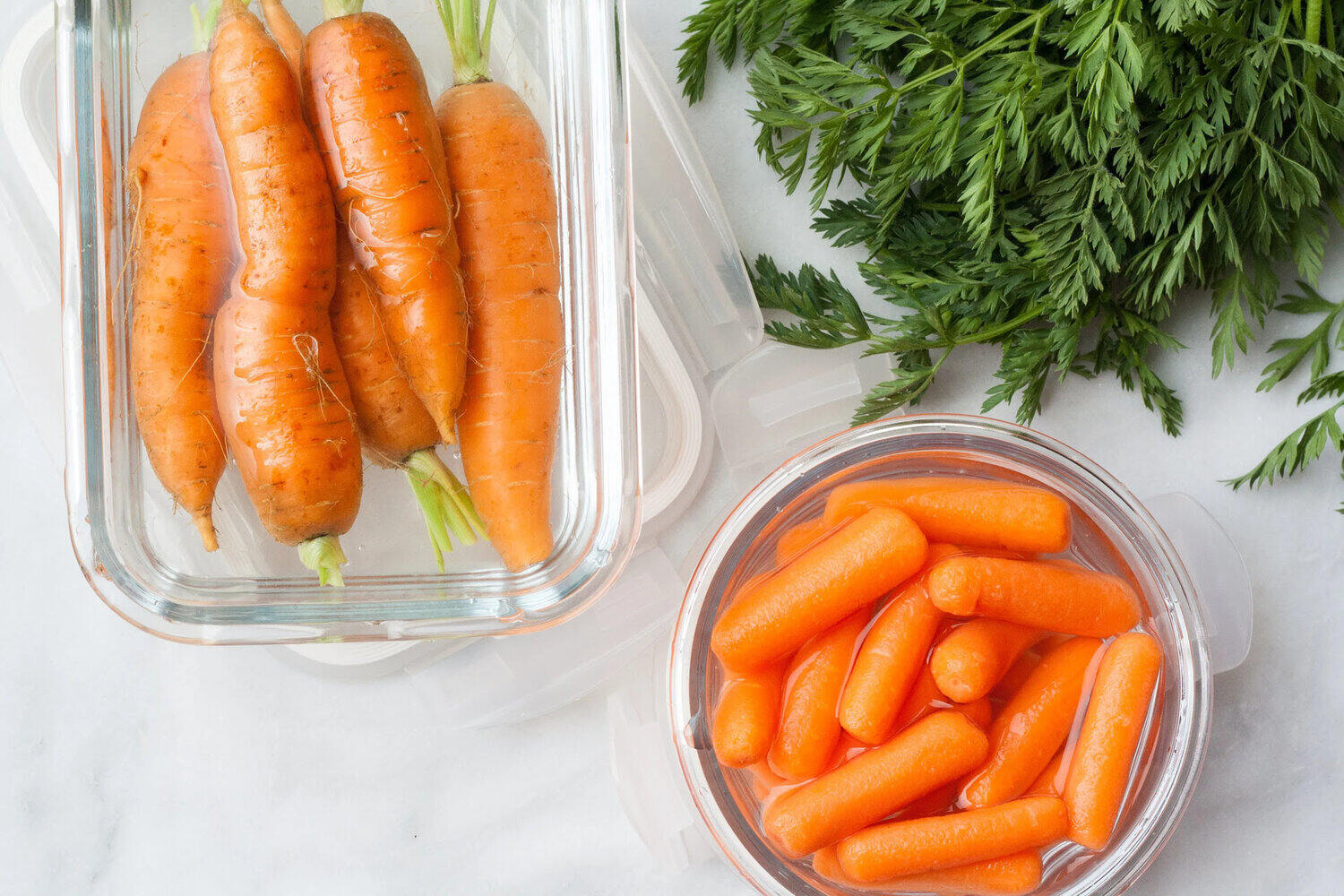
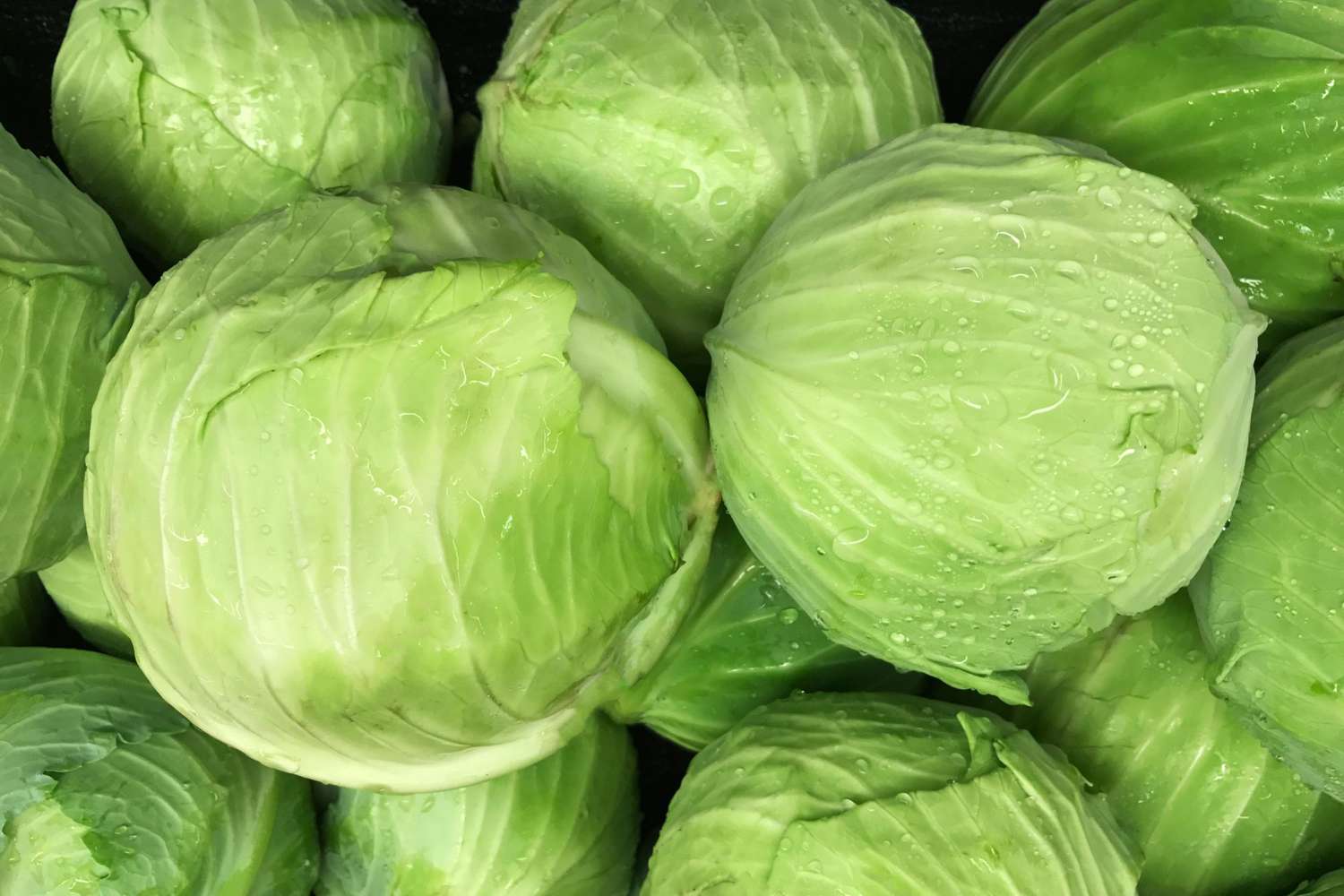
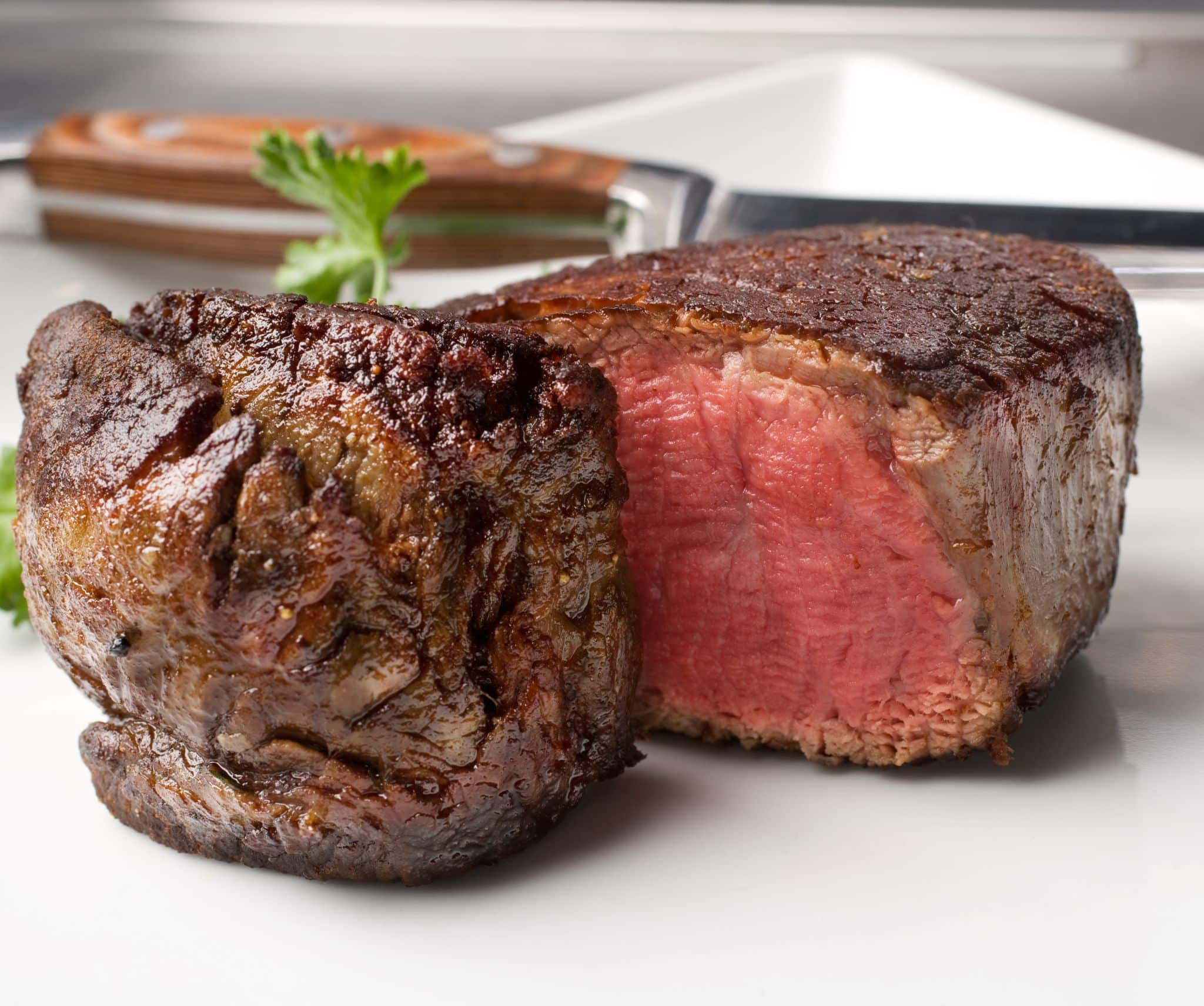
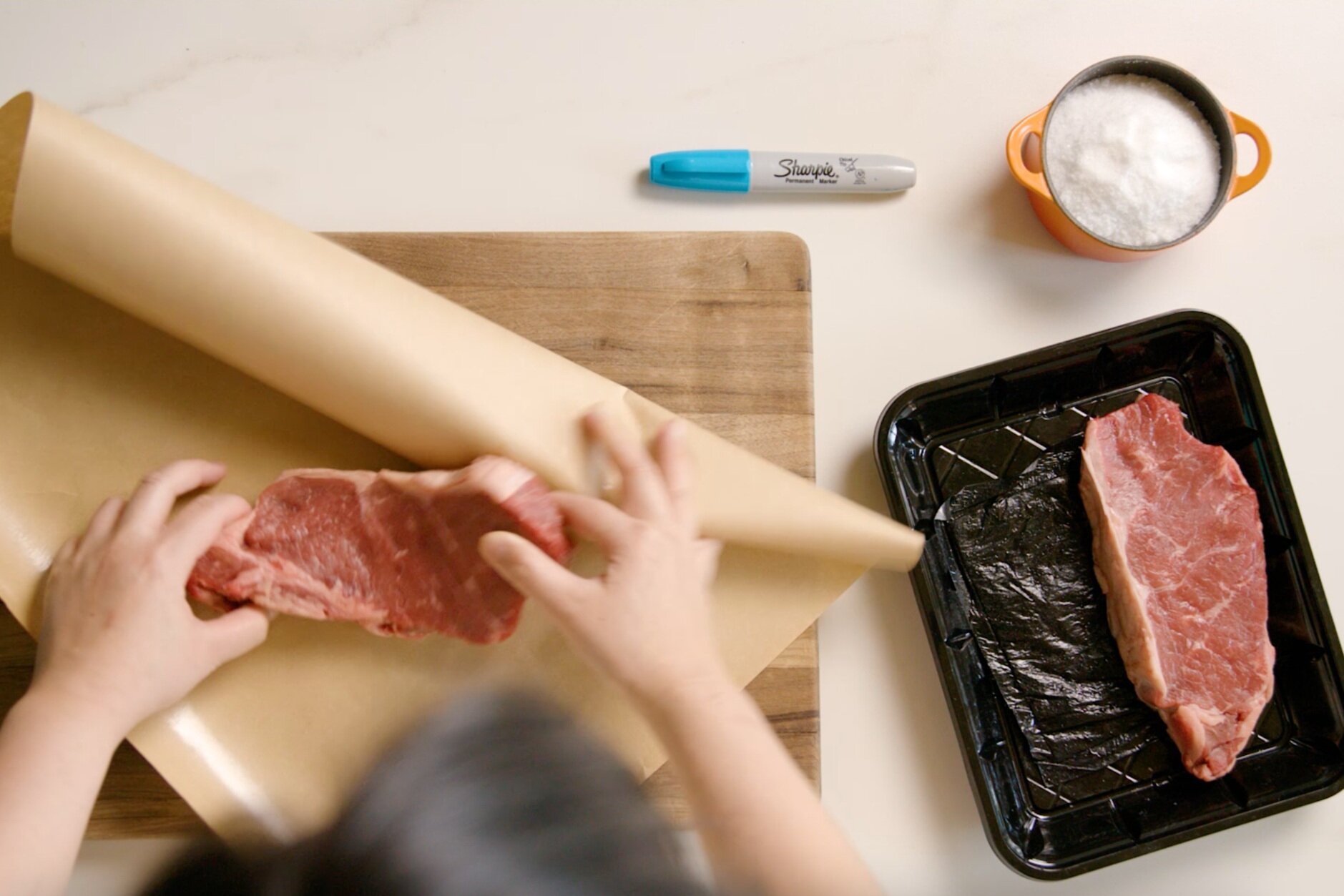

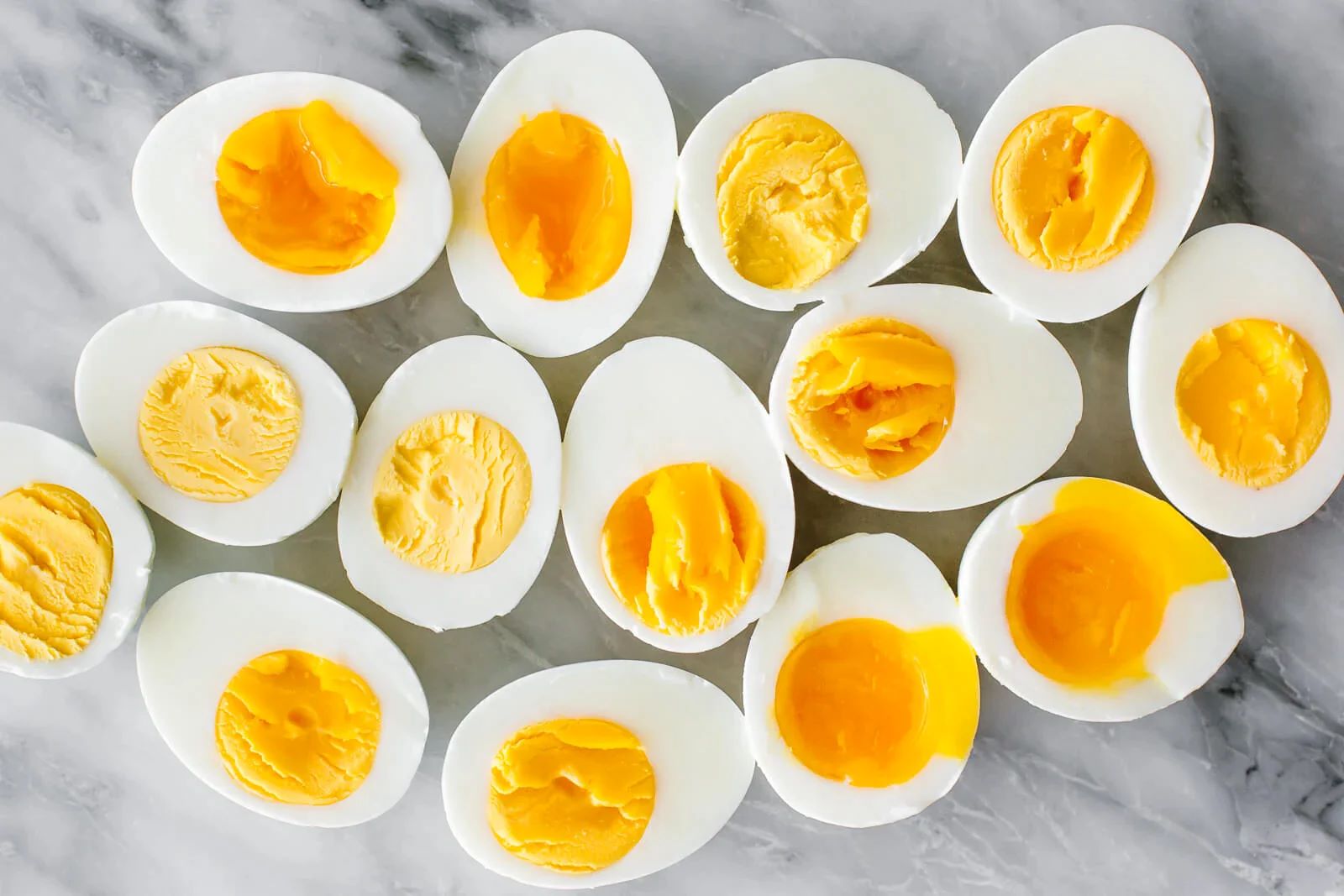
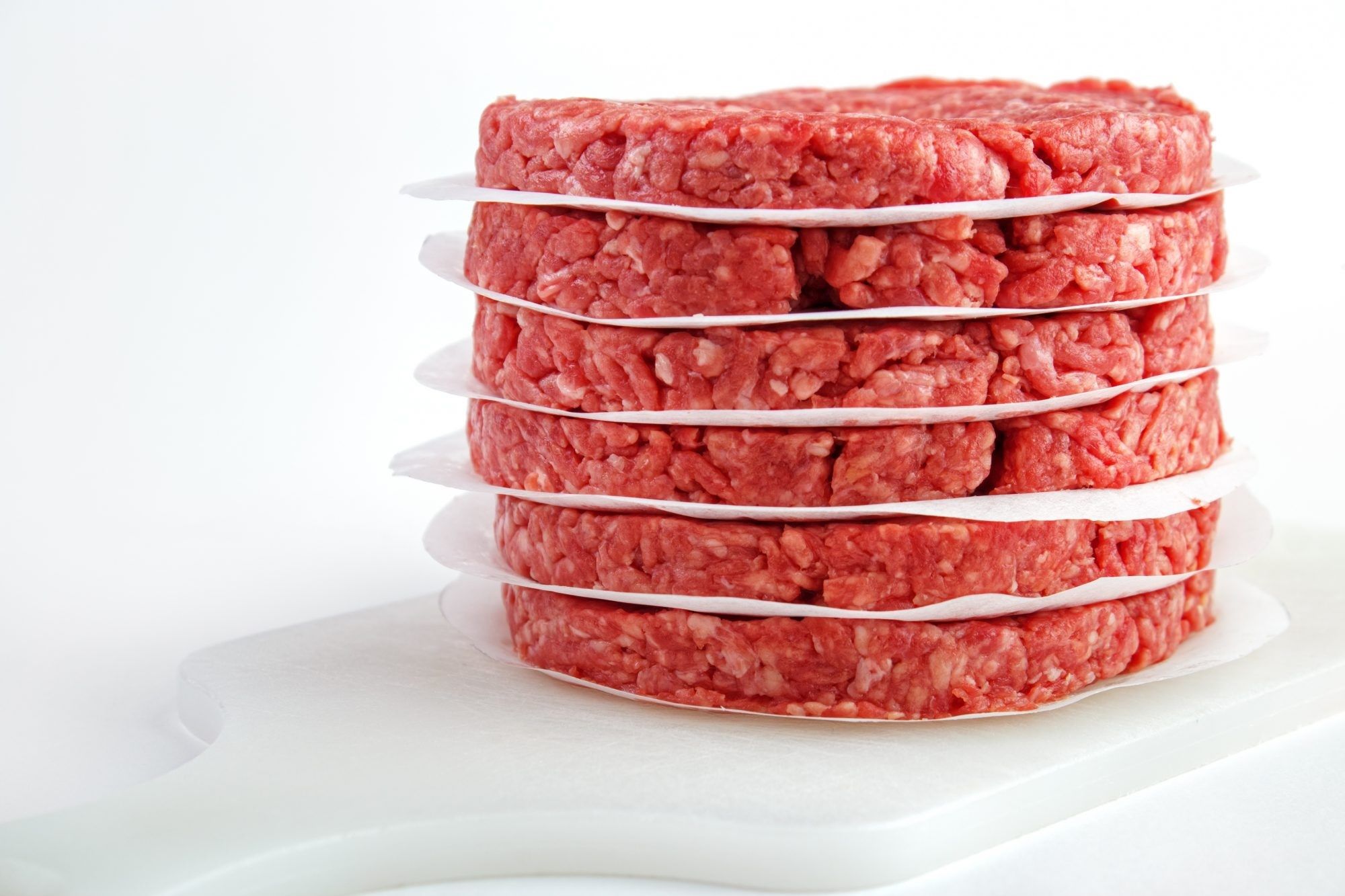
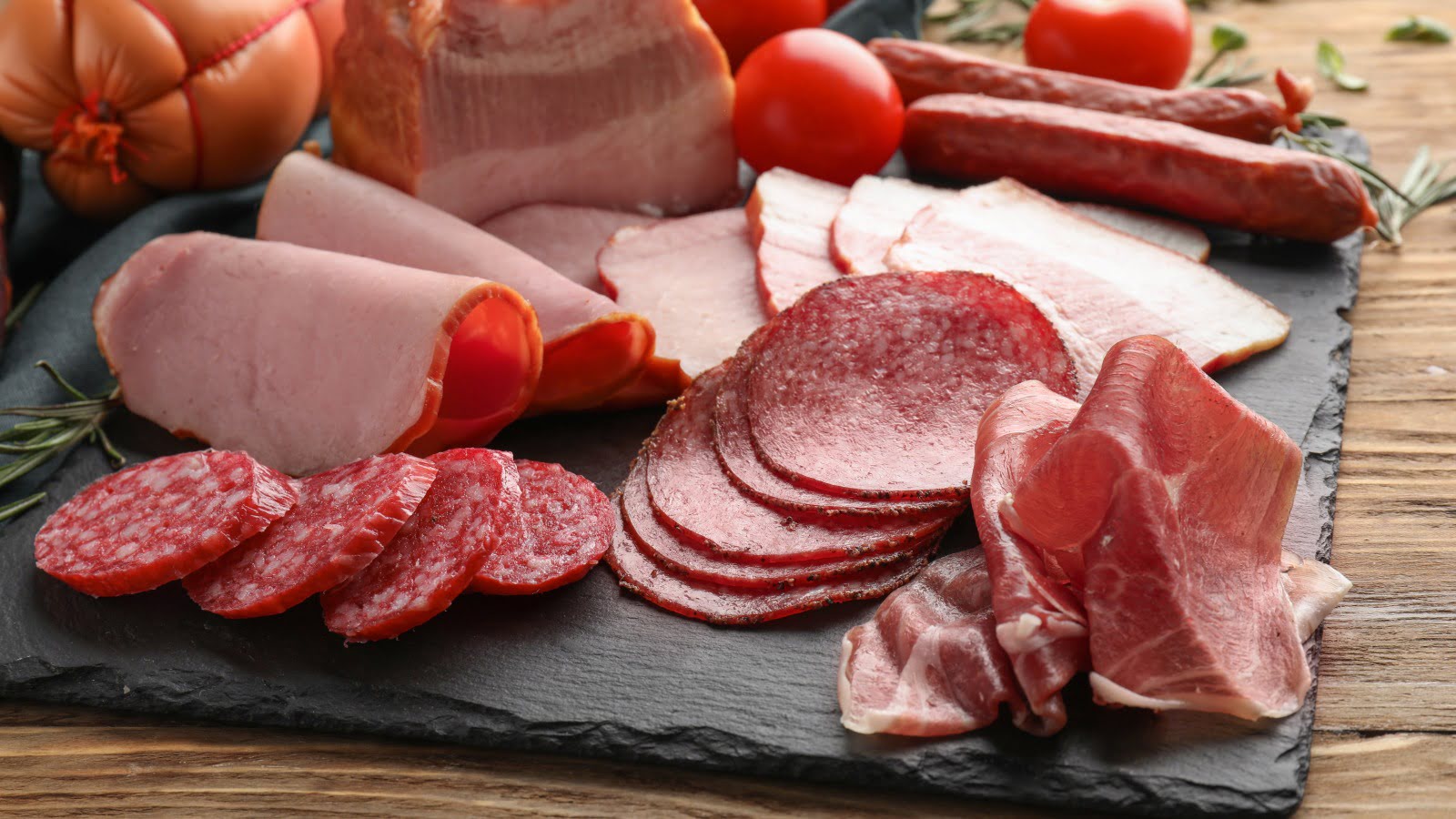
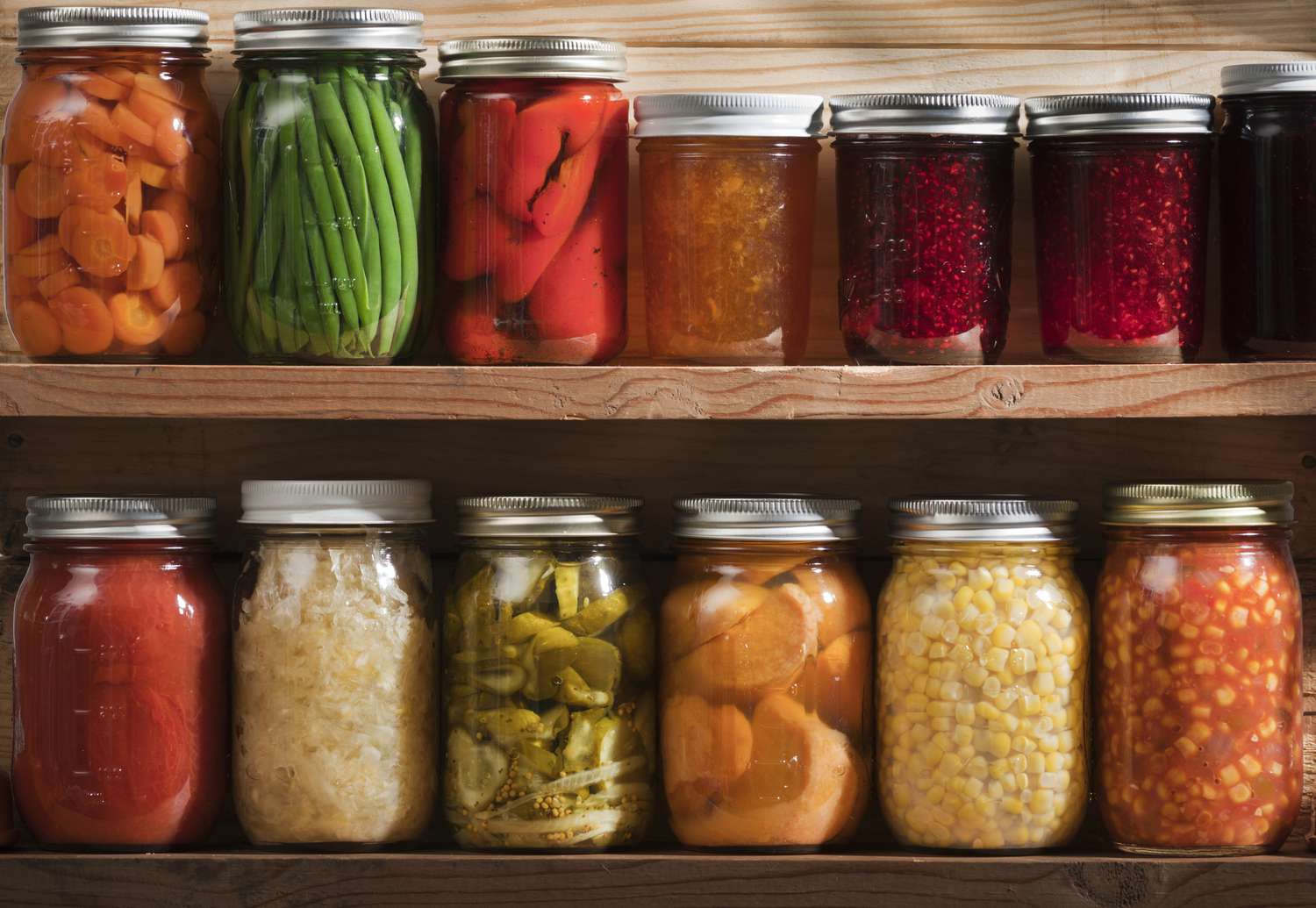

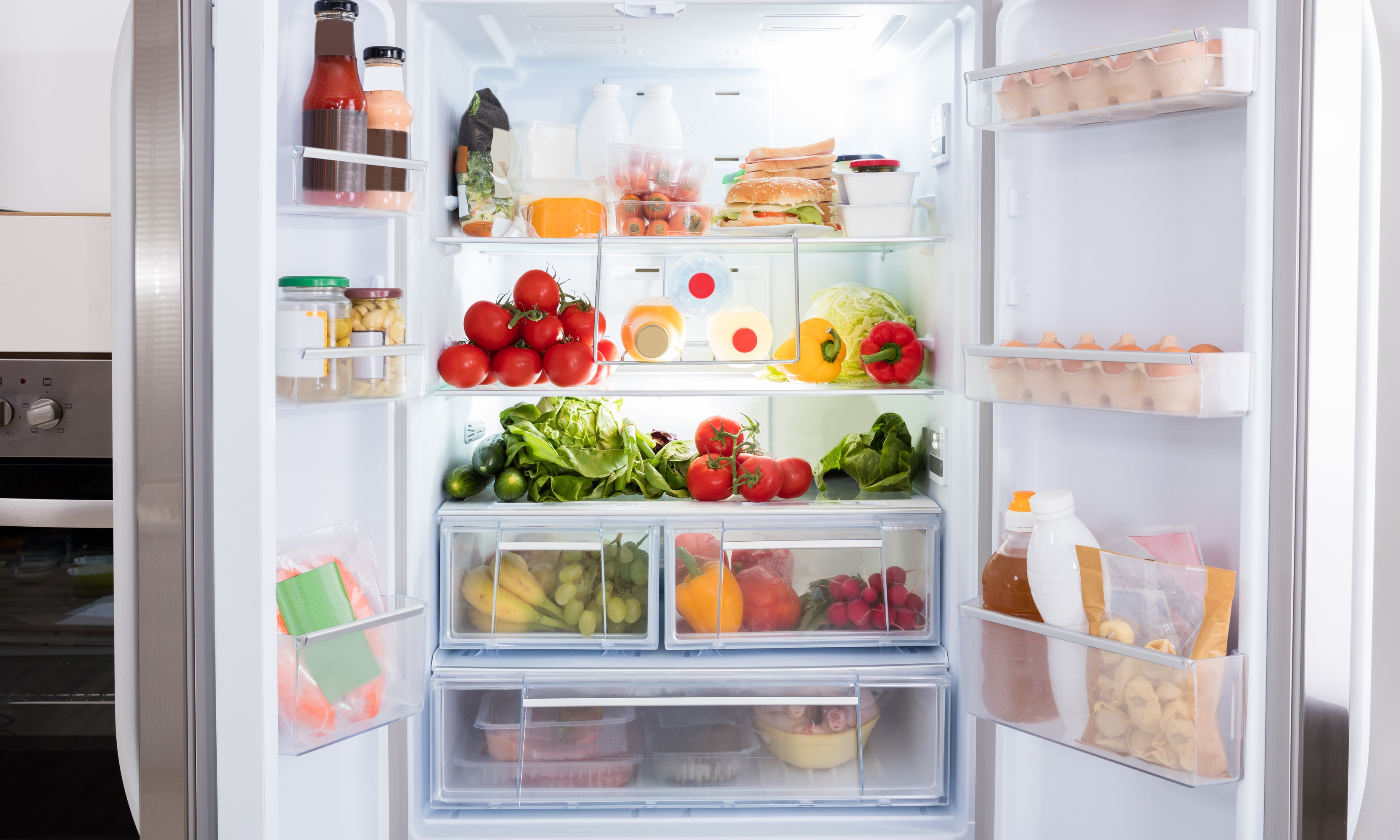


0 thoughts on “How To Store Meat Without Refrigeration”